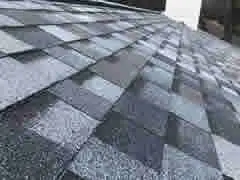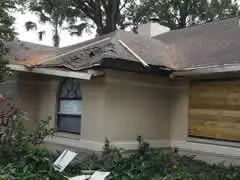How to Replace Fascia Metal
Replacing fascia metal involves removing the old, damaged piece and installing a new one. First, carefully remove the old fascia metal, often secured with nails or screws. Then, measure the area and cut the new fascia metal to the correct size, making sure it fits snugly. Finally, attach the new piece using appropriate fasteners, ensuring it’s secure and properly aligned for a clean, finished look. Watch videos on YouTube for visual guidance. This process protects the underlying wood from water damage and keeps your home looking its best.
What is Fascia Metal and Why Should You Replace It?
Fascia metal is the material that covers the wood fascia board on a house, and you should replace it when it is damaged or failing to protect the wood. The metal acts as a barrier against water, pests, and weather. Over time, this metal can rust, bend, or become loose, leaving the wood exposed.
Replacing damaged fascia metal keeps water from rotting the wood underneath. Damaged fascia can lead to expensive repairs if left unaddressed. New fascia metal improves curb appeal and protects your home’s structure for years to come. Addressing this issue promptly saves money in the long run.
What Tools and Materials are Needed to Replace Fascia Metal?
To replace fascia metal, a range of tools and materials are needed. Use a pry bar to remove the old fascia and a measuring tape to measure the new piece. Tin snips help cut the new fascia to size.
A hammer or nail gun secures the new fascia. Safety glasses and gloves protect you during the job. Metal nails or screws attach the fascia; choose the right type. Sealant protects against water damage if needed. Watching a YouTube video can help with the process. Having these items makes the task safer and easier.
How to Remove Damaged Fascia Metal: A Step-by-Step Guide
You remove damaged fascia metal by first gathering tools and carefully detaching the problem area. Start by gently lifting the damaged piece away from the wood using a pry bar. Score along any caulk lines with a utility knife to prevent splintering; this ensures a cleaner removal. Work along the length, carefully prying the metal loose bit by bit. A nail puller or drill helps remove stubborn nails or screws securing the fascia. Examine the now exposed wood for rot or damage, and address it before installing new fascia metal to prevent future problems.
Preparing for Installation: Measuring and Cutting New Fascia Metal
Measuring and cutting new fascia metal prepares it for installation by ensuring a proper fit and finish. To measure, use a measuring tape to determine the length of each fascia board you are replacing. Add extra inches to each measurement if you need overlap. Then, transfer these measurements onto your new fascia metal. To cut the metal, use tin snips or a metal cutting blade in a circular saw. Always wear safety glasses and gloves when cutting metal to protect yourself. Make straight, clean cuts, following the marked lines. Smooth any rough edges with a file to prevent injury and ensure a professional look.
How to Install New Fascia Metal for a Secure and Lasting Fit?
Install new fascia metal by prepping, measuring accurately, and fastening securely. First, remove old, damaged metal carefully. Check the wood sheathing for rot; replace it to create a solid base.
Next, measure each replacement piece precisely. Cut the new fascia metal to the needed size using metal snips. Overlap each joint by 2 inches to prevent water damage. Apply sealant to each seam for extra protection.
Finally, secure the new metal using galvanized metal screws or nails. Space fasteners about 6 inches apart for a strong, firm hold. Gently tap the metal with a rubber mallet to avoid dents and bends.
Metal Soffit and Fascia: Installation and Compatibility
Metal soffit and fascia installation involves fitting these materials properly and ensuring they work with other building parts. Installation often includes cutting the metal to fit, securing it with nails or screws, and sealing gaps. Metal fascia is usually compatible with most soffit materials, like wood or vinyl, if proper installation methods are used.
Consider the expansion and contraction rates of different materials during installation. Use sealants to prevent water damage where the fascia meets the roof or siding. Check local building codes to make sure your installation meets standards. Poor installation can lead to issues like water damage or the metal coming loose over time, so proper technique is important.
How to Repair Metal Fascia Trim: Quick Fixes and Long-Term Solutions?
You can repair metal fascia trim with quick fixes and long-term solutions. Quick fixes involve patching small holes using elastomeric caulk. Clean the area before applying caulk for better adhesion.
For long-term solutions, replacing the damaged metal fascia section is an option. This means removing the old piece and securing a new one with nails or screws. If the damage is extensive, consider replacing the entire fascia board for a durable, visually appealing result. Helpful videos on YouTube demonstrate each step.
What Fasteners Should You Use, and What Mistakes Should You Avoid?
You should use screws designed for exterior use, and you should avoid using nails. Screws hold the metal fascia more securely than nails, which can loosen over time from weather changes. Choose screws made of stainless steel or coated with weather-resistant material to prevent rust. A common mistake is using the wrong length of screw; if screws are too short, they won’t grip, but if screws are too long, they can protrude and look bad. Also, be sure to use the right drill bit size to avoid stripping the screw heads.
Preventing Future Damage and Maintaining Your Fascia Metal
Preventing future damage and maintaining your fascia metal involves regular inspections and prompt repairs. You can prevent damage by checking your fascia often for signs of wear, like rust or loose nails. If you find small problems, fix them quickly to stop them from getting worse.
Maintaining your fascia metal includes cleaning it at least once a year. Use a soft brush and mild soap to wash off dirt and grime. This helps the metal last longer. Also, make sure your gutters are clean, because full gutters can cause water to damage the fascia.
Consider applying a protective coating to the fascia metal. This can help prevent rust and other damage from weather for about $20. Regular care helps your fascia last longer and look better.
What are the Alternatives to Fascia Metal Replacement?
Fascia metal replacement alternatives are repairing minor damage, covering it, or using other materials. Aluminum or vinyl covers offer a refreshed look. YouTube provides how-to videos.
If full replacement is needed, consider vinyl, wood, or composite fascia. Vinyl is easy to maintain and inexpensive. Wood gives a classic look but needs regular painting. Composite resists rot and insects, offering longer protection. Each material presents unique aesthetics and upkeep needs. Select a fascia based on your budget and the style you want.
How Much Does Fascia Metal Replacement Cost?
Fascia metal replacement can cost $6 to $20 per linear foot, based on factors like metal type (aluminum or steel) and job complexity. Labor costs also influence the total expense.
The cost to replace fascia metal varies if you hire a professional or do it yourself. Hiring a contractor adds labor costs but ensures correct installation. Doing it yourself saves on labor if you have the skills and tools. Material costs, like metal fascia, nails, and sealant, should be included.
Get quotes from several licensed and insured contractors to find the best price. Watching YouTube videos can also provide helpful DIY guidance.



